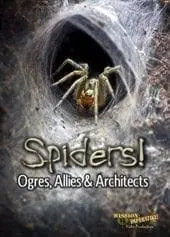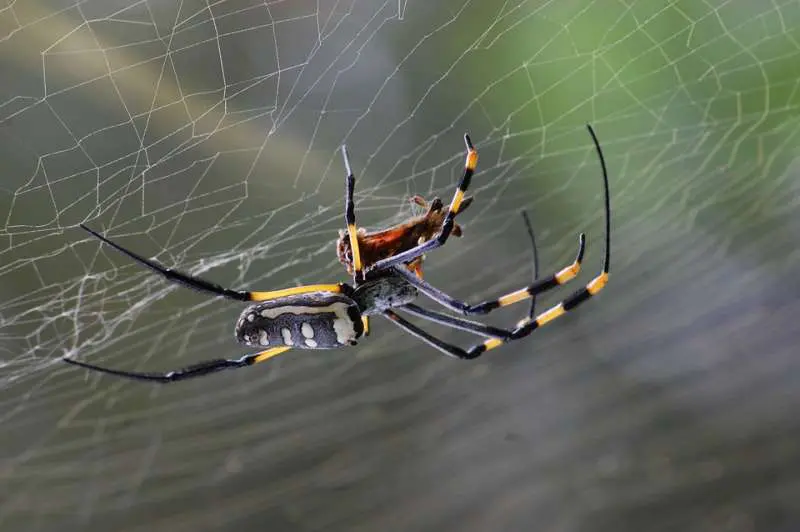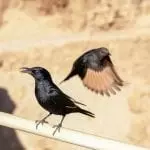[Originally published on Christian Perspective.net]
It’s hard to watch a spider spinning its web without being awed at how carefully he engineers something so fragile, yet so strong.
When we look at spider webs using math, the awe simply compounds. Did you know that “the spider web is actually comprised of numerous radii, a logarithmic spiral (given by the polar equation r=ae^{bθ} ) and the arithmetic spiral (given by the polar equation r = a+bθ )”1?
(Video courtesy of Julie G.; used with permission.)
Nature worded it this way: “Spider webs themselves are characterized by a highly organized geometry that optimizes their function.”2
![]() Spiders are yet one more example of how as we use math to explore God’s creation, we’re awed at the Creator’s wisdom and care. God designed spiders to spin these marvelous structures!
Spiders are yet one more example of how as we use math to explore God’s creation, we’re awed at the Creator’s wisdom and care. God designed spiders to spin these marvelous structures!
And we should be grateful He did. While spiders can certainly be spooky, they serve an incredible purpose. In his video Spiders! Ogres, Allies & Architects3, creation speaker Mike Snavely points out that if spiders were to take a vacation, the world would be overrun with insects. He actually uses math to better help us appreciate this fact.
 In the video, Snavely looked with the viewer at the results of a study of how many ounces of insects one specific type of spider eats on average per day, and at another study done in Holland estimating the average number of spiders in each square yard. Then using basic arithmetic and some more facts (such as the size of Holland, the size of the world compared to Holland, the average weight of a person, etc.), he walks through how one could arrive at an estimate that spiders consume bugs that would equal the weight of 10,000,000 people per day!
In the video, Snavely looked with the viewer at the results of a study of how many ounces of insects one specific type of spider eats on average per day, and at another study done in Holland estimating the average number of spiders in each square yard. Then using basic arithmetic and some more facts (such as the size of Holland, the size of the world compared to Holland, the average weight of a person, etc.), he walks through how one could arrive at an estimate that spiders consume bugs that would equal the weight of 10,000,000 people per day!
[Note: There’s no way to perfectly estimate something like this, but, as Snavely points out, “even if this number is exaggerated by a factor of 3 or even 4, that’s still a staggering number of bugs per day.” And other research indicates that the 10,000,000 number may even be a conservative estimate. It’s safe to say that spiders eat a LOT of bugs…and math helps us get a better idea of the magnitude of how much these little creatures eat!]
Now aren’t you glad God made spiders such incredible engineers?
He knew that in a fallen world, we’d need these little creatures to keep the insect population down.
I loved how Snavely actually walked through the math (which was simple arithmetic) behind the estimate of how many bugs spiders eat. While many times science books or resources only quote a final number on a topic, know that math is involved in calculating the numbers you encounter in science.
Math is truly the tool we use to explore God’s creation.
Here are a couple of ideas you can use to use math to explore God’s handiwork in spiders:
- Have your student draw a spider web. (You can find various instructions online; here are 3 Ways to Draw a Spider Web.) As they draw, point out that we call what they’re drawing “line segments,” “angles,” etc. Depending on your student’s ages, you could also talk about the names we use to describe different types of angles (such as acute and right) that they are drawing. Math helps us name God’s creation. You could also have them pull out a protractor and measure some angles.
- With older students, have them take a look at the spirals in many spider webs.
- Head for a walk and find a spider web. Use a protractor to estimate some of the angles (being careful not to disrupt the web).
- Read this article by Institute for Creation Research about God’s design on display in spider webs, and take a moment to thank God together for His wisdom and care over each detail.
- Watch Mike Snavely’s Spiders!. You’ll be wowed by these amazing little creatures…and the even more amazing God Who created them. Plus, you’ll get to see an amazing example of math in action.






